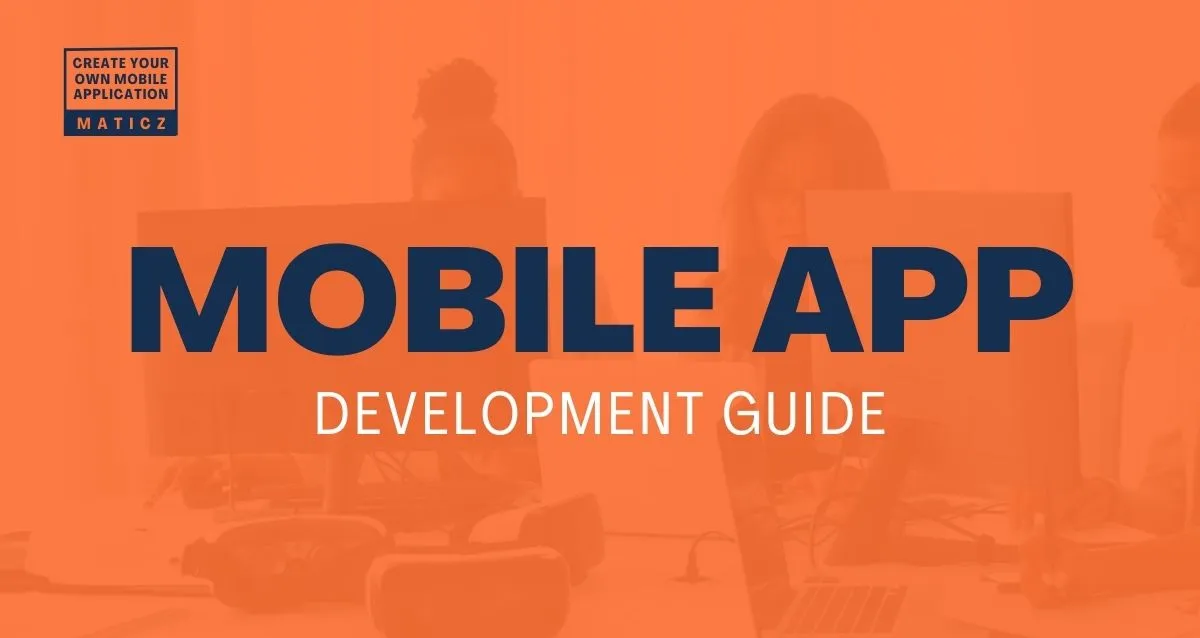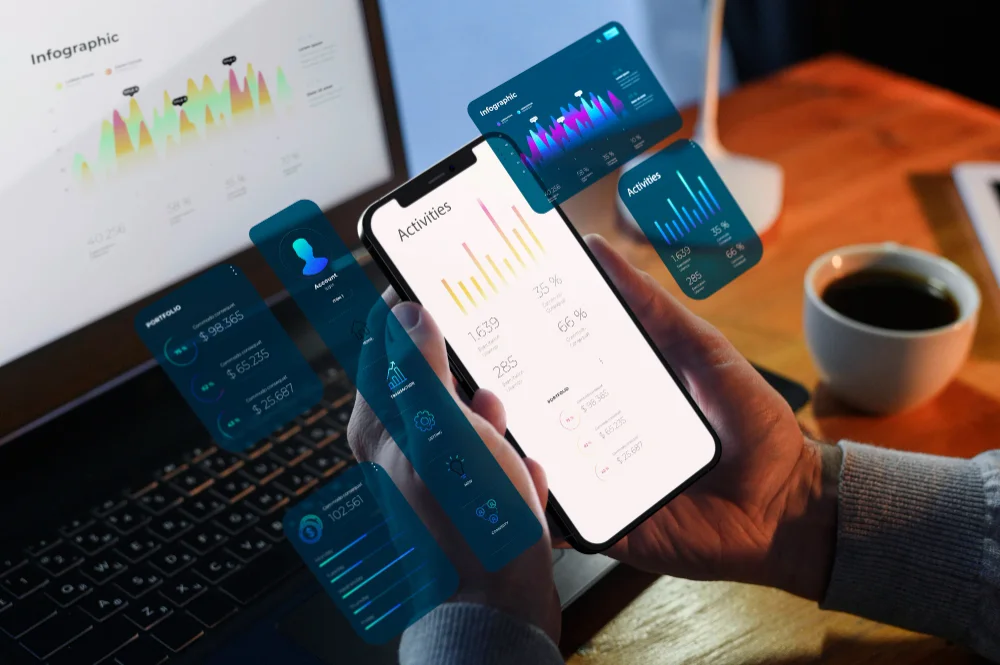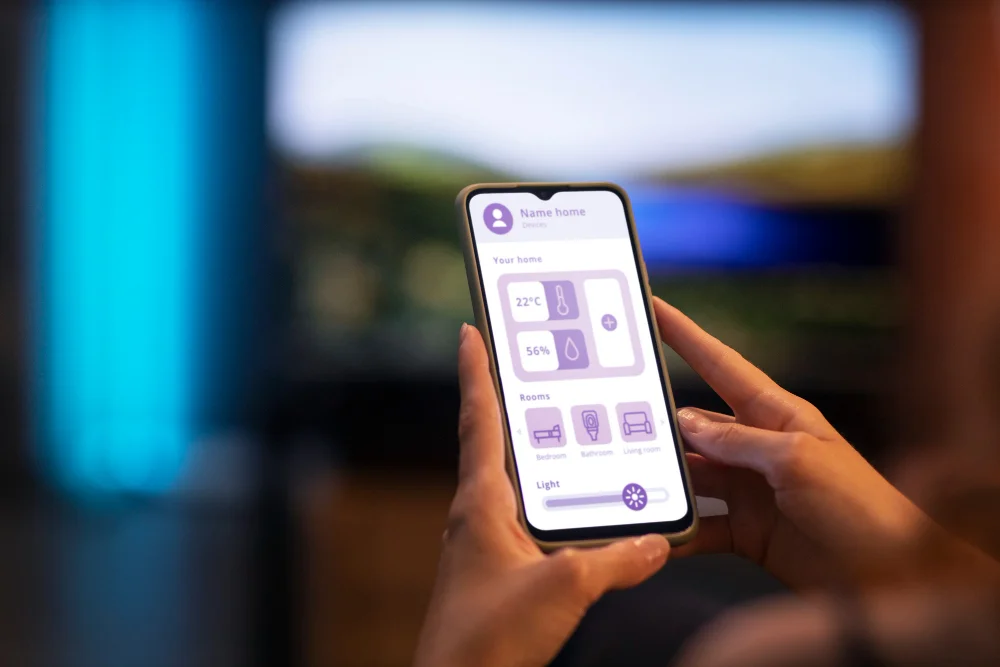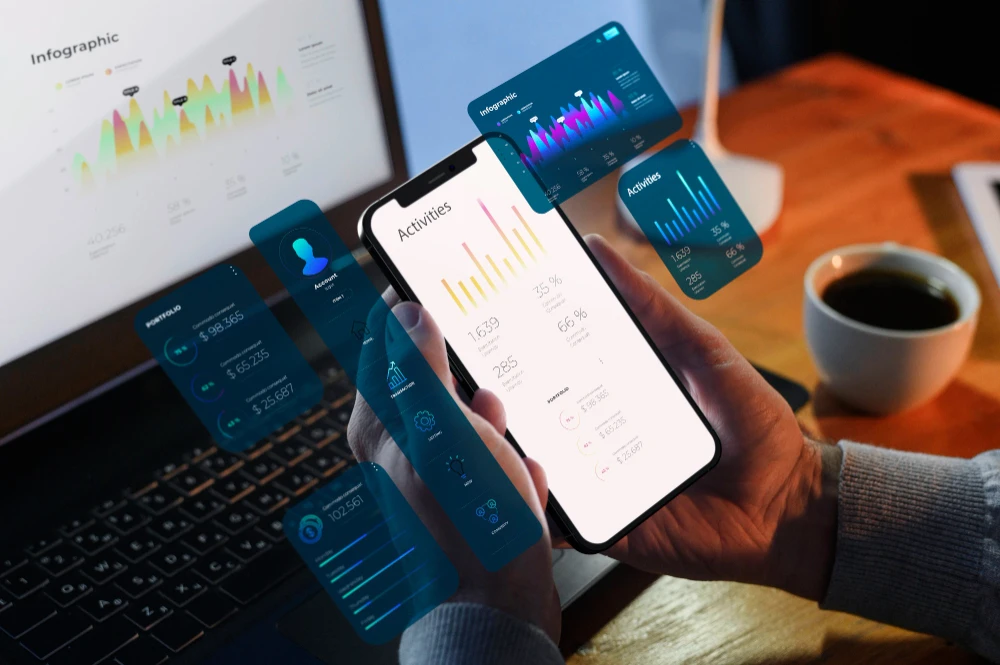Share Posts

Mobile App Development Guide - Create a Mobile App in 2024
46
3984
103
The mobile app industry has come a long way from its humble beginnings and has transformed into a vast ecosystem of diverse applications catering to various needs and industries. As smartphones became more powerful, mobile games gained popularity, and developers realized the lucrative opportunities in the gaming sector.
The introduction of centralized app stores like Apple's App Store and Google Play Store revolutionized the industry and made it easier for users to discover and download apps. The mobile app industry witnessed a new wave of innovation with the emergence of social networking apps like Facebook, Twitter, and Instagram, which transformed the way people connect, share, and communicate. This also led to the rise of social media platforms and communication tools.
The industry further evolved with the emergence of on-demand service apps like Uber, Airbnb, and food delivery platforms like Uber Eats and DoorDash. These apps disrupted traditional industries by providing convenient and efficient services at users' fingertips.
Looking ahead, we can expect further innovations and groundbreaking developments that will shape the future of the mobile app industry. With the integration of mobile apps with the Internet of Things (IoT) and wearable devices, we can redefine user experiences and create new opportunities.
What is Mobile App Development?
Mobile app development involves the creation of software applications uniquely crafted to operate on mobile devices like smartphones and tablets. It involves a series of steps, including planning, designing, coding, testing, and launching, to create a functional and user-friendly application.
Mobile app development requires expertise in various technologies, programming languages, and frameworks. Developers use different approaches and tools depending on the platform they are targeting, such as iOS or Android.
With the rapid growth of the mobile industry, mobile app development has become a crucial aspect of businesses and individuals looking to reach and engage with their target audience effectively.
Mobile application development is a dynamic and competitive field that continues to evolve with advancements in technology. Developers must stay updated with the latest trends, tools, and best practices to create successful and impactful mobile applications.
Types of Mobile Application
When it comes to developing mobile applications, there are three main types such as native, hybrid, and web apps. Each type has its unique characteristics, advantages, and considerations. Let's explore these types in more detail.
- Native
- Web
- Hybrid
1. Native Applications
Native apps are specifically developed for a particular mobile operating system (OS), such as iOS or Android, using the platform's native programming languages and development tools.
These apps are built using languages like Swift or Objective-C for iOS and Java or Kotlin for Android. Native apps have direct access to device-specific features and APIs, providing a high level of performance and a seamless user experience.
2. Hybrid Applications
Hybrid applications are a mix of both native and web applications. They are developed using web technologies such as HTML, CSS, and JavaScript, and then wrapped in a native container that allows them to run on a mobile device.
They can be developed once and deployed across multiple platforms, reducing the cost and time of development. Although hybrid apps can access some device features using plugins or APIs, they don't have the same access as native apps. Tools such as Apache Cordova and React Native assist in creating hybrid apps.
3. Web Applications
Web applications are optimized websites for mobile devices and accessed through a web browser without requiring installation from an app store. They are built using web technologies like HTML, CSS, and JavaScript and are responsive to adapt to various screen sizes.
Web apps can run on any device with a web browser, regardless of the operating system, and developing a single web app that works across multiple platforms can be more cost-effective than building separate native or hybrid apps.
How to Create a Mobile App?
Creating a mobile app can be a complex but rewarding endeavor. This comprehensive guide will take you through the step-by-step process of creating a mobile app, from setting goals and conducting research to launching it in the app store. Let's dive in.
1. Define Your Goals
Before diving into app development, it's crucial to have a clear understanding of your business objectives. Ask yourself questions such as: What problem does the app solve? How does it contribute to your business growth? Defining your business goals will help you set priorities and make informed decisions throughout the development process.
Understanding your target audience is key to developing a successful mobile app. Identify your target demographic, their preferences, behaviors, and pain points. Conduct thorough market research and gather insights to gain a deep understanding of your users' needs and expectations.
By defining your goals at the outset of the mobile app development process, you lay a solid foundation for a successful project.
2. Conduct Market Research
Start by deeply understanding the market in which your app will operate. Identify industry trends, market size, growth potential, and any specific challenges or opportunities. Analyze market reports, industry publications, and relevant online resources to gather comprehensive information.
To develop a successful mobile app, you need to have a clear understanding of your target audience. Conduct detailed demographic research to identify the characteristics of your potential users. Explore their preferences, behaviors, pain points, and expectations related to your app's domain.
3. Proof Concept Your Idea
In the mobile app development process, one crucial step before diving into full-scale development is to prove the concept of your idea. This step involves validating and testing your app concept to ensure its viability and feasibility. By doing so, you can minimize risks, refine your idea, and lay a solid foundation for the development phase.
Before investing significant time and resources into app development, it's crucial to validate the market demand for your idea. Conduct market research, surveys, and interviews to gather feedback from potential users or target audiences.
This step helps you understand if there is a genuine need or interest in your app, and whether it aligns with user expectations and preferences. By validating the market demand, you can ensure that you are building a product that has the potential to succeed.
4. Plan Your Launch Platform
Decide whether you want to launch your app on a single platform such as iOS apps and Android apps or multiple platforms simultaneously. Each app launch platform has its own set of requirements, guidelines, and submission processes. Analyze these requirements carefully to ensure that your app meets the platform's standards and guidelines.
Consider factors like technical specifications, design guidelines, content policies, and app review processes. Adhering to these guidelines will help you avoid rejections or delays during the submission process and ensure a smooth launch.
Assess whether your app can be developed for multiple platforms simultaneously or if you should focus on one platform initially and expand to others later.
5. Outline Core Features and Functionalities
Start by clearly defining the purpose of your app and its value proposition. Identify the problem or need your app aims to solve or fulfill and the unique value it provides to users. Understanding your app's purpose and value proposition will help you align the core features and functionalities with your overall app vision and user expectations.
Make a list of the core features and functionalities your app will offer. Focus on solving the problem you identified earlier. Prioritize features based on their importance and create a minimum viable product (MVP) that includes essential features. This will allow you to launch quickly and gather user feedback.
This step serves as a foundation to give shape to your app and set the stage for a successful development process.
6. Create Wireframes and Mockups
In the mobile app development process, the step of creating wireframes and mockups is crucial. This step is where abstract ideas start to take tangible shape, providing developers, designers, and stakeholders with a visual representation of the app-to-be.
Wireframes are skeletal, low-fidelity representations of the app's layout, structure, and functionality. They focus on the arrangement and placement of elements without delving into design details. Mockups, on the other hand, are high-fidelity, static visual representations that incorporate design elements such as colors, fonts, and branding.
Wireframes and mockups facilitate an iterative design process. Stakeholders, including clients and end-users, can provide feedback based on visual representations, allowing for adjustments and improvements before the actual coding begins.
The clarity and insights gained during this stage pave the way for a smoother development journey, ultimately leading to the creation of a mobile app that not only functions seamlessly but also captivates users with its visual appeal.
7. Select an App Development Path
Choose the development path that suits your app's requirements and your team's skills. You can develop natively, using platform-specific languages (Swift for iOS, Java/Kotlin for Android), or opt for cross-platform development frameworks like React Native or Flutter. Consider factors such as development time, cost, and desired app performance.
The nature of the app, its functionalities, and its target audience influence the choice of development path. For performance-centric applications, native development may be preferred, while cost-effective projects might lean towards cross-platform or hybrid solutions.
The skills and expertise of the development team play a crucial role. If the team has proficiency in a specific technology or framework, it may influence the chosen development path.
8. Design UI/UX
Create an appealing and intuitive user interface (UI) for your app. Consider factors such as typography, iconography, and overall branding. Pay attention to the user experience (UX) by ensuring smooth navigation, clear feedback, and easy-to-understand interactions.
Crafting a seamless navigation flow is crucial for a positive user experience. Users should be able to navigate effortlessly between screens and features.
Designing UI elements and layouts that adapt seamlessly to various screen sizes and resolutions ensures a consistent and enjoyable experience across different devices.
This step becomes a transformative phase in the mobile app development process that resonates with users and stands out in a crowded digital landscape.
9. Begin Coding
Begin by selecting an appropriate code architecture that governs the structure and organization of the codebase.
Depending on the chosen development path such as native, cross-platform, and hybrid, developers pick frameworks and libraries that align with the project's requirements. This includes tools like React Native, Flutter, Xamarin, or native development languages.
Developers start implementing the core features outlined in the project specifications. This involves writing code for user interactions, data processing, and integration with backend services or APIs.
The UI/UX design created in the earlier phase is translated into code. If the app relies on external data or services, developers integrate APIs or connect to backend systems. This step ensures that the app can dynamically fetch and update information.
10. Perform Multiple Tests
Thoroughly test your app at various stages of development. Conduct functional testing to ensure all features work as intended. Perform usability testing to gather feedback on the user experience.
Test your app on different devices and operating systems to identify and fix any bugs or compatibility issues.
Functional Testing involves validating that each app feature works according to the specifications. It is essential to ensure that buttons, links, and other interactive elements function as intended.
Mobile devices come in various models, screen sizes, and operating system versions. Compatibility testing ensures the app performs seamlessly across this diverse landscape, providing a consistent user experience.
It is necessary to identify and address vulnerabilities, ensuring that user data remains secure and protected.
11. Gather and Implement Feedback
The step of gathering and implementing feedback in the mobile app development process represents a crucial loop of refinement and enhancement.
Seek feedback from beta testers or potential users. Collect their suggestions, insights, and bug reports to improve your app's functionality and user experience. Iteratively refine your app based on the feedback you receive.
Engage with your user community to build a loyal user base. Categorize feedback into different themes, such as usability issues, feature requests, or bug reports. This categorization aids in prioritizing and addressing the most critical issues first.
12. Launch in the app store
The step of launch in the app store marks the culmination of countless hours of planning, designing, coding, testing, and refining. It's the moment when a mobile app transitions from development environments to the hands of users worldwide.
Once you are confident in your app's quality and usability, it's time to prepare for the official launch. Follow the guidelines and requirements of the respective app stores such as Apple App Store and Google Play Store for app submission.
How Much Does it Cost to Develop a Mobile App?
The cost of developing a mobile app can vary significantly depending on various factors such as the complexity of the app, the platforms targeted, the features and functionality required, the development approach, the location and experience of the development team, and the timeline of the project. It's important to note that estimating the exact cost of app development is challenging, as each project is unique.
A simple app with basic features and a straightforward user interface will generally cost less to develop compared to a complex app with advanced functionality, integrations with third-party systems, and intricate user interfaces.
The location and experience of the development team can significantly influence the cost. Development rates vary across regions and countries. Hiring a development team from regions with lower labor costs may result in cost savings. If you have any idea of developing mobile apps at a nominal rate, hire mobile app developers from an experienced team.
Developing basic apps with simple functionality may require an investment ranging from $10,000 to $40,000. On the other hand, the development cost for more intricate applications like social media or e-commerce apps can fall within the range of $30,000 to $500,000 or beyond.
To know more in detail, get insights from Mobile app development costs.
Build Your Own Mobile App Now
Creating a mobile app can be a rewarding and impactful endeavor for businesses and individuals alike. It opens up new opportunities for reaching and engaging with customers, improving productivity, and driving growth. As you embark on your mobile app development journey, remember to carefully consider your goals, target audience, and desired features.
Seek the expertise of a reputable mobile app development company, Maticz that can guide you through the process, from concept to launch and beyond. Don't miss out on the immense potential that a well-crafted mobile app can offer. Leap and transform your ideas into a reality. Contact our experienced team today and let us help you bring your mobile app vision to life.
Tap Into the Future
The latest insights, posts, and project updates - straight to your inbox.




